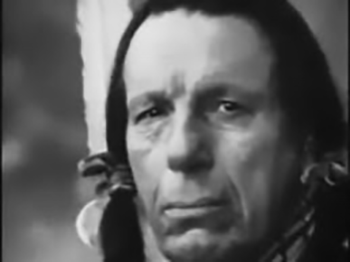
(above) In the 1970″s the “Crying Indian” TV commercial became the face of the anti-pollution campaign.
Earth Day’s 50th Anniversary
April 22, 2020
During the 1960’s Americans became aware and alarmed at the deteriorating condition of the environment.
In the decades leading up to the first Earth Day, Americans were consuming vast amounts of leaded gas through massive and inefficient automobiles. Industry belched out smoke and sludge with little fear of the consequences from either the law or bad press. Air pollution was commonly accepted as the smell of prosperity. Until this point, mainstream America remained largely oblivious to environmental concerns and how a polluted environment threatens human health.
However, the stage was set for change with the publication of Rachel Carson’s bestseller Silent Spring in 1962. The book represented a watershed moment, selling more than 500,000 copies in 24 countries as it raised public awareness and concern for living organisms, the environment and the inextricable links between pollution and public health.
Earth Day founder Gaylord Nelson came up with the idea for a national day to focus on the environment after Nelson, then a U.S. Senator from Wisconsin, witnessed the ravages of a massive oil spill in Santa Barbara, California, in 1969. Inspired by the student anti-war movement, Senator Nelson realized that if he could infuse the energy of anti-war protests with an emerging public consciousness about air and water pollution, it would force environmental protection onto the national political agenda. He then persuaded Pete McCloskey, a conservation-minded Republican Congressman, to serve as his co-chair.
Earth Day, April 22,1970 gave a voice to an emerging public consciousness about the state of our planet. Today on April 22, we celebrate the anniversary of the birth of the modern environmental movement.
On April 22, 1970, 20 million Americans,10% of the total population of the United States, took to the streets, parks and auditoriums to demonstrate for a healthy, sustainable environment in massive coast-to-coast rallies. Thousands of colleges and universities organized protests against the deterioration of the environment.
Groups that had been fighting individually against oil spills, polluting factories and power plants, raw sewage, toxic dumps, pesticides, freeways, the loss of wilderness and the extinction of wildlife united on Earth Day around these shared common values. Earth Day 1970 achieved a rare political alignment, enlisting support from Republicans and Democrats, rich and poor, urban dwellers and farmers, business and labor leaders. By the end of 1970, the first Earth Day led to the creation of the United States Environmental Protection Agency and the passage of the Clean Air, Clean Water and Endangered Species Act.
“It was a gamble,” Senator Gaylord recalled, “but it worked.”
In 1990, Earth Day went global, mobilizing 200 million people in 141 countries and lifting environmental issues onto the world stage. Earth Day 1990 gave a huge boost to recycling efforts worldwide and helped pave the way for the 1992 United Nations Earth Summit in Rio de Janeiro. President Bill Clinton awarded Senator Nelson the Presidential Medal of Freedom, the highest honor given to civilians in the United States, for his role as Earth Day founder.
As the millennium approached, Hayes agreed to spearhead another campaign, this time focused on global warming and a push for clean energy. With 5,000 environmental groups in a record 184 countries reaching out to hundreds of millions of people, Earth Day 2000 built both global and local conversations, leveraging the power of the internet to organize activists around the world. Hundreds of thousands of people also gathered on the National Mall in Washington DC, for a First Amendment Rally.
Today, Earth Day is widely recognized as the largest secular observance in the world, marked by more than a billion people every year as a day of action to change human behavior and provoke policy changes.
Now, the fight for a clean environment continues with increasing urgency, as the ravages of climate change become more and more apparent every day.
The social and cultural environments we saw in 1970 are rising up again today, a fresh and frustrated generation of young people such as Greta Thunberg are refusing to settle for platitudes, instead taking to the streets by the millions to demand a new way forward. Digital and social media are bringing these conversations, protests, strikes and mobilizations to a global audience, uniting a concerned citizenry as never before and catalyzing generations to join together to take on the greatest challenge that humankind has faced.
By tapping into some of the legacy of the first Earth Day while also channeling the energy, excitement, and coordination of the youth climate strikes, we can build a movement going into the 50th anniversary that goes to the very heart of what Earth Day is all about, empowering individuals with the information, the tools, the messaging and the communities needed to make an impact and drive change.
For more information on the history of Earth Day go to: www.earthday,org/history
Give a hoot, don’t pollute,
James
